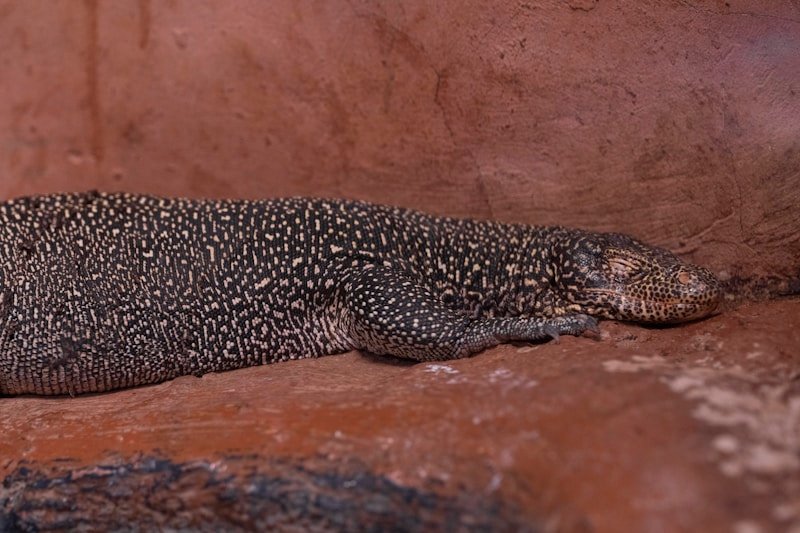Reptiles are a group of animals that have successfully adapted to a wide range of extreme environments, from the blistering deserts to the deep jungles and icy tundras. These adaptations have enabled them to survive and thrive in places that would be inhospitable for most other animals. With their unique biological features and behavioral strategies, reptiles showcase some of nature’s most remarkable examples of survival. In this article, we will explore the various ways in which reptiles adapt to extreme environments, focusing on four key areas: thermoregulation, water conservation, camouflage, and reproduction.
Thermoregulation: Mastering Temperature Control
Reptiles are ectothermic, meaning they rely on external sources of heat to regulate their body temperature. In extreme environments, particularly in deserts or high-altitude regions where temperatures fluctuate dramatically, this can be both a challenge and an advantage. Reptiles have developed several techniques to manage temperature and avoid overheating or freezing.
In hot environments, such as deserts, many reptiles employ behaviors like basking in the early morning or late afternoon when the sun is less intense. By lying on sun-warmed rocks, they can raise their body temperature without risking overheating. However, during the midday heat, they retreat to the shade or burrow underground to escape the extreme temperatures.
On the flip side, in colder environments like high altitudes or temperate zones, reptiles often slow down their metabolic rate to conserve energy. Some species, like the Arctic Tortoise, enter a state of torpor or hibernation during the colder months. This behavior allows them to survive through winter when food is scarce and temperatures are too low to support active metabolism.
Water Conservation: Surviving with Minimal Water
One of the most critical adaptations reptiles have developed in extreme environments is their ability to conserve water. In deserts, where rainfall is infrequent, reptiles need to use every opportunity to conserve water, often relying on highly efficient systems to minimize water loss.
The skin of many desert reptiles, like the famous horned lizard or the Gila monster, is thick and covered with scales that reduce water evaporation. Their kidneys are highly efficient, excreting waste in the form of concentrated urine, which helps conserve precious water. Furthermore, some reptiles, such as the spiny-tailed lizard, can survive long periods without drinking water by absorbing moisture from the food they eat, or even from dew that forms overnight.
In some cases, reptiles like the desert-dwelling snake Chionactis occipitalis have specialized behavior. They will remain motionless in the cooler hours of the night, using minimal energy while preserving water.
Camouflage: Blending into the Environment
In extreme environments, especially in deserts, forests, or rocky terrains, the ability to remain undetected is often critical for a reptile’s survival. Camouflages provides these creatures with the means to evade predators and increase their hunting success.
Many reptiles possess skin that blends seamlessly with their surroundings. Take, for example, the chameleon: its color-changing abilities are well-known, but these reptiles also have specialized cells called chromatophores in their skin, which allow them to adjust their color to match their environment. This color change can also help with thermoregulation, as darker colors absorb more heat, while lighter shades reflect it.
Other reptiles, such as the leaf-tailed gecko, mimic the appearance of leaves or bark, rendering them nearly invisible to both prey and predators. In desert environments, reptiles like the horned lizard often sport patterns and colors that mimic the sandy surroundings, allowing them to hide in plain sight.
The ability to blend into the environment is also advantageous during hunting. Many snakes, for instance, will lie motionless in their surroundings and wait for prey to approach, making use of their camouflaged bodies to remain unseen until the moment they strike.
Reproduction: Strategies for Offspring Survival
Reproduction is another area where reptiles have developed ingenious strategies to thrive in extreme environments. The harsh conditions in some regions demand that reptiles be highly selective about when and how they reproduce to ensure the survival of their offspring.
In desert regions, some reptiles, like the desert tortoise, have evolved to time their reproduction with the brief periods of rainfall. The female tortoises will only mate and lay eggs when they can be sure that there will be enough moisture in the ground for the eggs to incubate successfully. Additionally, many desert reptiles lay their eggs underground to protect them from the scorching sun.
Cold-blooded reptiles, such as the common garter snake, use the heat of the sun to incubate their eggs. Some species, like the viviparous lizard, even give birth to live young, which eliminates the need for eggs to be laid and incubated in unpredictable environmental conditions.
In more frigid environments, reptiles like the snow gecko have developed special strategies for surviving the cold during reproduction. They are known to lay their eggs in burrows or cracks in rocks that offer warmth and protection from the elements. These geckos will often wait for warmer temperatures to hatch, ensuring a higher survival rate for the young.
Conclusion
Reptiles have long been admired for their ability to survive in some of the most extreme environments on Earth. Through a combination of behavioral, physiological, and morphological adaptations, they have found ways to manage temperature extremes, conserve precious water, blend into their surroundings, and ensure the survival of their offspring. Whether through basking in the sun, utilizing water-saving strategies, or mastering the art of camouflage, these remarkable creatures continue to thrive in habitats that challenge the very notion of survival. Their ability to adapt to these conditions is a testament to the incredible resilience of life on Earth.

